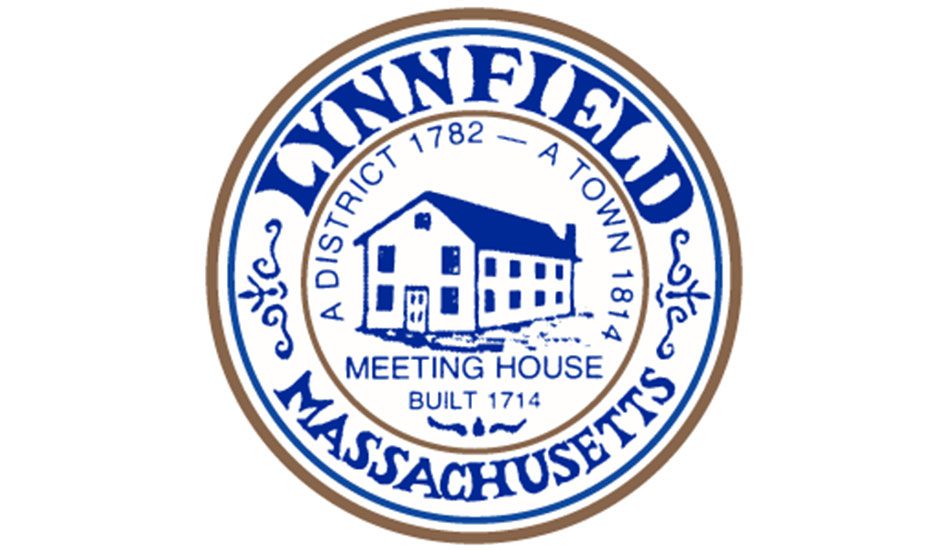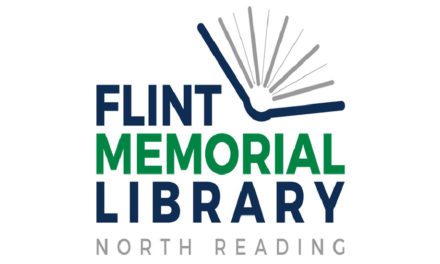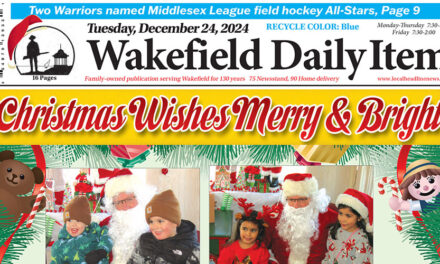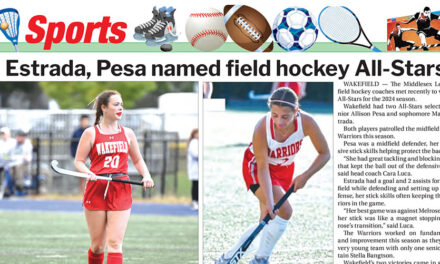By DAN TOMASELLO
LYNNFIELD — Balanced growth and government transparency were two of the themes highlighted in the “Lynnfield 2040 Vision Plan.”
Planning Board Chair Page Wilkins said during a recent Select Board meeting that the “‘Lynnfield 2040: Shaping Our Future Today Vision Plan’ is a collaborative, strategic planning report that outlines a vision for the future of Lynnfield, inclusive of community aspirations, goals and values.”
“It has been 22 years since the Lynnfield Master Plan was developed, and the town has changed considerably during that time,” said Wilkins. “The Vision Plan is the first step toward updating the town’s Master Plan.”
Wilkins said 800 residents answered questions on the Vision Plan’s survey last year.
Balanced growth
The first theme that the Vision Plan identified pertained to “balanced growth.”
“Current residents chose to live in Lynnfield because of its quiet, small town character,” the Vision Plan states. “They’re concerned that new development will negatively impact the town due to demands for increased town services, including school enrollment and water supply, increased traffic congestion and loss of the natural environment. At the same time, 40 percent of survey respondents expressed fear of housing instability due to high housing costs, including property taxes. Seniors noted that there are limited options for downsizing and longtime residents said that their children cannot afford to stay in Lynnfield. Two-thirds of survey respondents who moved to Lynnfield in the past three years had a difficult time finding housing, and this is likely to continue as (the) housing supply is limited.”
According to the Vision Plan survey, 76 percent of respondents stated that having a “vibrant Lynnfield Centre is important,” while 62 percent of respondents “believe South Lynnfield should be a vibrant activity center.”
“Lynnfield would be well-served to focus planning efforts in existing centers, while finding ways to preserve the small town feel of outlying areas of town that are more interspersed with open space and natural resources,” the plan states.
The plan also revealed that respondents “shared an openness to pursuing economic development and job growth, partly to support the tax base and partly to make (the) town center and South Lynnfield more vibrant, as long as it doesn’t change the residential character of the town.”
“Twenty-one percent of respondents are supportive of more economic development initiatives, and another 45 percent of respondents are open to the idea but need more information,” the plan states. “On the whole, there is a desire for thoughtful planning that balances growth with its impact on residents. Sixty-eight percent of respondents note that loss of natural resources is one of Lynnfield’s greatest challenges, calling for strategic and efficient land use decisions that advance environmental goals. Seventy-eight percent of respondents identified open space and natural resources as important community features. Seventy percent identified parks and trails as important.”
The plan also noted that, “Lynnfield High School students agree that open space and natural resources are vital community features.”
“High school students also acknowledged that Lynnfield’s rising housing costs are a great concern for keeping existing residents and attracting young people back to Lynnfield,” the plan states.
Connected community
The second theme that emerged in the Vision Plan pertained to “connected community.”
“Lynnfield residents expressed a desire for community cohesion and gathering, a theme that was also present in the 2002 Master Plan,” the plan states. “Seventy-six percent of survey respondents said that it is important for the town to provide social opportunities for youth, seniors and others.”
LHS students also reported that, “Having things to do and places to go is very important.”
“Residents also expressed a desire for improved transportation connections around town, especially well-maintained sidewalks and safe bicycle facilities,” the plan states. “Sixty-seven percent of residents believe multimodal transportation options are important. High school students noted that Lynnfield’s lack of bike paths and sidewalks are some of Lynnfield’s greatest challenges. Having the ability to move around Lynnfield and see neighbors out and about is something that residents of all ages would like to see more.”
Transparent government
The third theme highlighted in the Vision Plan focused on “transparent and well-run town government.”
“Lynnfield has a strong culture of volunteerism, with many residents offering their time and energy to keep the town running,” the plan states. “However, residents’ needs are outpacing the capacity of both town staff and volunteers. Many residents feel like they don’t know what’s going on in Town Hall. The lack of communication has led to a distrust of town government and frustration with all involved, based on comments provided in the survey.”
The plan noted that survey respondents “want a better understanding of ongoing town initiatives and projects, including capital improvements such as the rail trail and policy changes like zoning and property tax rates.”
“At least 70 percent of respondents said that municipal finances and local tax rates, maintenance of municipal facilities or issues with town governance were among Lynnfield’s greatest challenges,” the plan states.
The Vision Plan recommended that town officials work to “improve communication and transparency.”
Areas to explore
The Vision Plan also identified three addition areas for the town to explore, including economic development.
“Lynnfield has undertaken few economic development initiatives beyond permitting the MarketStreet development since the 2002 Master Plan,” the plan states. “Lynnfield residents often voiced displeasure with the town’s reliance on the residential tax base and increasing property taxes. Review of the town’s zoning map shows that there are few areas available for commercial growth, and existing commercial centers are somewhat underutilized.”
The Vision Plan also identified “climate resiliency and adaptation” as another area to explore.
“Conversations around land use decisions and impacts to the climate and natural resources should be considered in a future Master Plan update,” the plan states.
The final theme that the Vision Plan encouraged local officials to explore pertained to “racial and social equity.”
“In 2020, the Planning Board adopted a resolution regarding past discrimination and present and future solutions,” the plan states. “The resolution acknowledged government’s role in racial discrimination and specifically historical planning and zoning practices that led to racial and socioeconomic segregation. The resolution recommitted to making the town of Lynnfield ‘a welcoming place for all.’”
According to the Vision Plan survey, “64 percent of respondents said racial and social equity is important to varying degrees.”
“Sixteen percent of respondents said this is not important, while 19 percent of respondents were neutral,” the plan states. “When asked how welcoming and inviting respondents feel Lynnfield is to residents of different groups, 39 percent of respondents said Lynnfield is not very welcoming to people with lower incomes. Twenty-seven percent of respondents do not think Lynnfield is welcoming to those whose primary language is not English. Twenty-five percent of respondents said Lynnfield is not very welcoming to people of color. Interestingly, survey respondents only felt confident that Lynnfield is very welcoming to young families (64 percent of respondents noting this).
“While there is some consensus that racial and social equity is important, the survey responses highlight that community conversations about actions towards advancing racial and social equity and expanding inclusivity are necessary,” the plan continues. “For example, Lynnfield can become more racial and socioeconomically diverse through expanding access to more affordable forms of housing (rental homes, accessory dwelling units without an occupancy requirement and smaller housing types like townhomes or duplexes). However, many comments received in the survey are opposed to these ideas.”
Select Board commends plan
After Planning Board Chair Page Wilkins gave an overview of the Vision Plan, she thanked the Select Board for supporting the initiative.
“After hearing the Select Board’s goals for the year, we as a board felt like we were seeing the vision come to life in several ways,” said Wilkins. “More transparency, long-term planning and evaluating facilities. It was exciting for us to see that being heard and implemented.”
Wilkins said the Planning Board is “prepared to work” with local officials in order to have “the recommended strategies in the 2040 Vision Plan integrated into the discussions and decision-making of Lynnfield’s boards, commissions and committees.”
“We also plan to work closely with the Planning and Conservation Department’s staff to move forward on a new Master Plan,” added Wilkins.
Select Board Chair Dick Dalton recalled that he served on the Planning Board when the last Master Plan was adopted in 2002.
“This is a lot more in-depth and more comprehensive than what we did in 2002,” said Dalton. “It’s a great read. You would really benefit from reading this document.”
Select Board member Phil Crawford noted that it took “hundreds of hours of volunteer work” to complete the Vision Plan.
“Everybody has to realize these are volunteer boards, and it takes time to do this,” said Crawford.
Select Board member Alexis Leahy said the Vision Plan is “a very good read.”
“The best part of it was the consideration of future planning efforts,” said Leahy. “I look forward to seeing how these will come into some tangible outcomes and how the collaboration is going to increase with the town groups. I think this gives everybody a very open picture of some of the challenges that we are facing and also some of the things that this town does very well. I appreciate all of the effort.”





